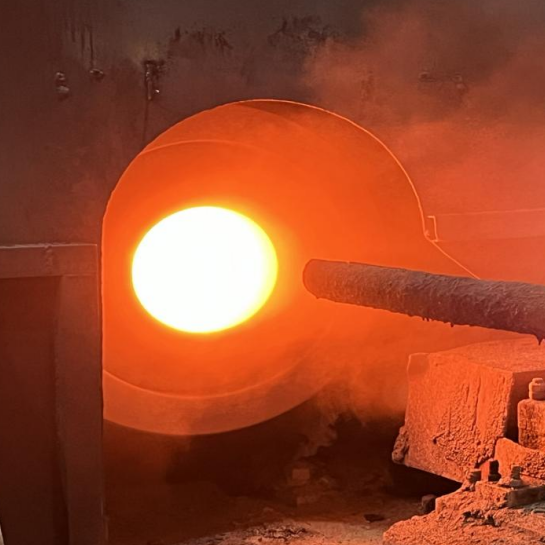Medium-wave temperature measurement mwir camera(mwir camera-temperature measurement technology based on short-wave radiation) has the following significant advantages:
- Atmospheric Window Advantage: The medium-wave band (3–5μm) lies within an atmospheric window, where water vapor, carbon dioxide, and other molecules absorb less radiation. This allows MW thermometry to maintain stable signal transmission in challenging environments like smoke, dust, or high humidity, outperforming long-wave (LW) infrared in extreme conditions.
- Immunity to Ambient Light: MW sensors are less sensitive to visible light and short-wave infrared interference (e.g., sunlight, artificial lighting), making them ideal for outdoor or high-light industrial applications (e.g., online monitoring of high-temperature equipment, early fire detection).
- Planck’s Law Compatibility: High definition infrared camera for high-temperature objects (800–2000°C), the radiation peak shifts to shorter wavelengths (short-wave and medium-wave). MW thermometry directly captures this intense radiation with a higher signal-to-noise ratio, offering superior accuracy compared to LW infrared.
Example Applications: Measuring molten steel in metallurgy, glass furnace temperatures, or turbine blade temperatures in aerospace.
- Fast Response Time: MW detectors (e.g., InSb, HgCdTe) feature nanosecond-level response times, enabling real-time tracking of rapidly changing temperatures (e.g., laser processing, explosion dynamics).
- Diffraction Limit Benefit: Shorter wavelengths in the MW range allow optical systems to achieve smaller diffraction limits, enabling higher spatial resolution (i.e., smaller spot sizes) with the same aperture. This is critical for imaging tiny targets like semiconductor solder joints or microelectronics.
Comparison: In PCB inspection, MW thermography can pinpoint overheating in individual components, while LW may average temperatures over larger areas.
- Compact Optical Systems: Shorter wavelengths permit smaller optical components (lenses, mirrors), facilitating integration into portable devices, drones, or compact industrial systems for close-range precision measurements.
- Stable Emissivity for Metals: Most metals exhibit consistent and predictable emissivity in the MW range, we use high speed thermal cameraunlike LW where surface oxidation or roughness can distort readings. This eliminates frequent emissivity recalibration when measuring via high speed thermal camera unoxidized metal surfaces (e.g., steel plates, pipelines).
- Transparent Material Suitability: Semi-transparent materials (e.g., glass, plastics) often absorb MW radiation more effectively than LW, allowing direct measurement of internal temperatures (e.g., monitoring glass annealing processes).
- Hybrid Cooling Options: MW detectors offer both cooled (e.g., InSb for high-precision applications) and uncooled (e.g., quantum well detectors) solutions. Uncooled MW technologies are increasingly affordable, balancing performance and cost for mid-range industrial use.
- Multispectral Fusion Potential: MW can be combined with SW/LW infrared in multispectral systems, enhancing measurement reliability in complex scenarios (e.g., distinguishing target radiation from background reflections).
| Industry |
Use Cases |
MW Thermometry Advantages |
| Industrial |
Steel rolling temperature control, wafer thermal mapping-high definition infrared camera targeting |
High-temperature accuracy, anti-metal interference |
| Aerospace |
Engine thermal barrier coating inspection, missile seeker-high speed thermal camera |
Fast response, atmospheric penetration |
| Firefighting |
Fire source localization in smoky environments |
Smoke penetration, real-time dynamics |
| Research |
Plasma temperature measurement, combustion analysis-mwir camera |
Ultra-high-temperature precision, nanosecond response |
The core strengths of MW thermometry lie in its balance of high-temperature accuracy, environmental robustness, and spatial resolution, making it indispensable for applications requiring fast, precise measurements in challenging conditions. With advancements in uncooled MW detectors, its usability is expanding from high-end industries to broader sectors like security and smart devices. When selecting a thermometry method, MW is ideal for high-temperature, small-target, or harsh-environment scenarios, often complementing LW or other technologies.

